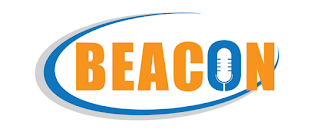
The growth of SMEs in 2022 was monumental, as the number of registered SMEs in Saudi Arabia hit 892,063 at the end of June, registering a 25.6 percent increase from the fourth quarter of 2021.
In its report titled SME Monitor, Monsha’at said that Riyadh and Makkah were the most attractive regions for startups, accounting for 35.4 percent and 21 percent of the Kingdom’s SMEs respectively in the first half of 2022.
The report also revealed that Saudi Arabia has successfully narrowed the gender gap in the Kingdom, as 45 percent of SMEs are now headed by women.
According to the report, regulatory reforms over the first half of 2022 have played a crucial role in increasing the number of female entrepreneurs in the country, with most of them leading firms in the food, wholesale and retail, health and professional sectors and supporting service industries.
Small and medium-sized enterprises are a force to reckon with in Saudi Arabia as the Kingdom, in line with the goals outlined in Vision 2030, continues to diversify its economy which has been dependent on oil for several decades.
Even when COVID-19 disrupted global economies, SMEs in Saudi Arabia remained steadfast in their growth under the visionary leadership of King Salman and Crown Prince Mohammed bin Salman.
In 2022, when the world started rebounding from the fallout of the pandemic, the support offered by the government to SMEs in Saudi Arabia was instrumental in helping them get back on their feet.
With new regulations, reforms and financial support aimed to create an accommodative environment, the government is transforming the SME sector into an engine for economic growth in the Kingdom.
Saudi Arabia’s Small and Medium Enterprises General Authority, also known as Monsha’at, is fueling the growth of the SME sector in the Kingdom.
The state-run authority offers entrepreneurial platforms such as business incubators, business accelerators, and co-working spaces for SMEs to evolve and thrive in the market. The authority also facilitates government-fee refund, direct and indirect lending programs for SMEs and fast-growing unicorns.
Through these initiatives, Monsha’at aims to successfully achieve the targets outlined in Vision 2030 which include lowering the unemployment rate from 11.6 percent to 7 percent, increasing women’s participation in the workforce from 22 percent to 30 percent, and expanding SME contribution to 35 percent of gross domestic product by the end of this decade.


















No comments:
Post a Comment